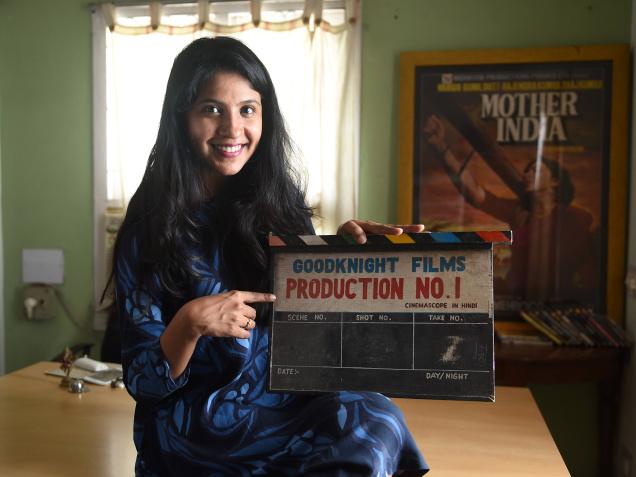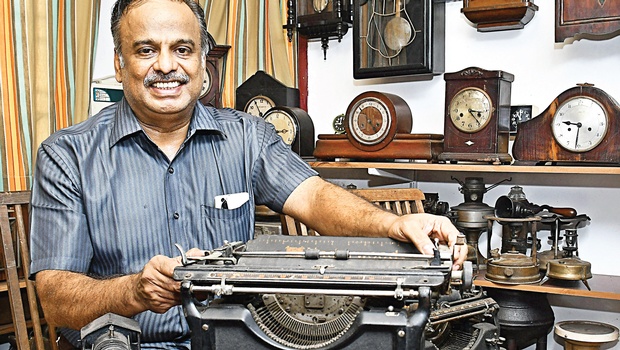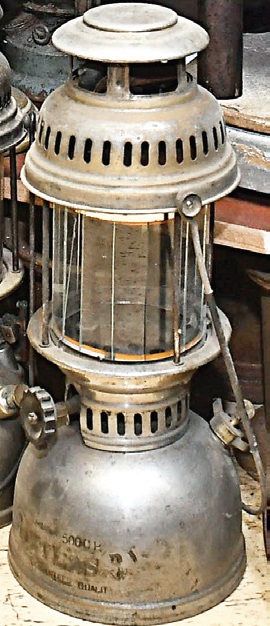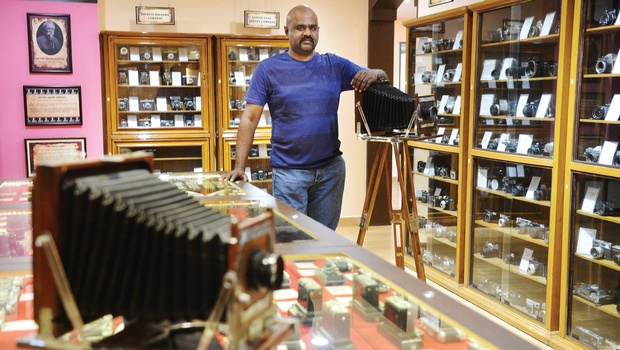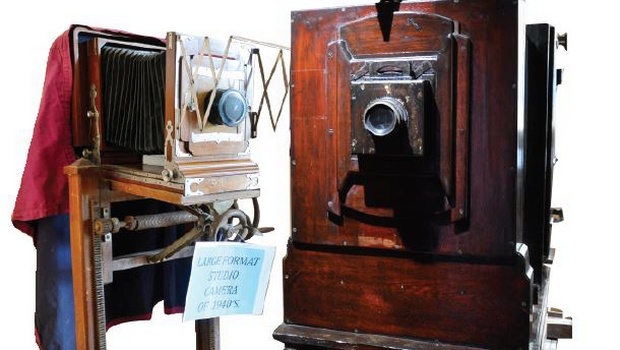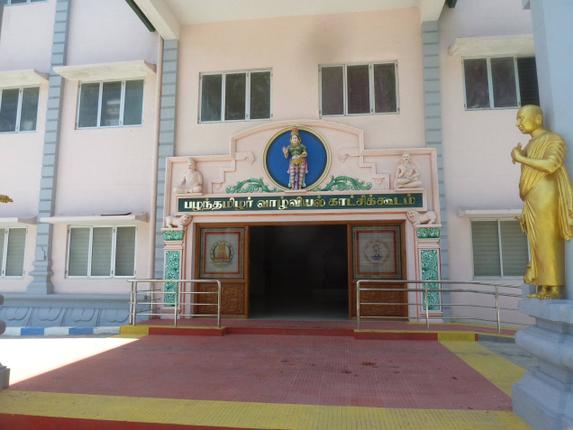Jagdish Koppa’s book on Bangalore Nagarathnamma is a detailed account of the musician and also the life of devadasis in South India
This is a single question quiz. Name this person from Mysore who was an extraordinary musician, a writer of eminence, an activist, and a philanthropist. No guesses? Another clue. If you are a connoisseur of music, and if you have visited Tiruvaiyaru, you may perhaps know. But if you still have difficulty in answering this question, it is not your fault.
Who determines what is high and what is low in the flow of history? Why do these conscious erasures take place? Gender, caste, class or all of these? If you still haven’t got your answer, then here it is: the exceptional artiste Bangalore Nagarathnamma. She spent her last years in Tiruvaiyaru and donated all her earnings for the maintenance of the dilapidated samadhi of saint Tyagaraja. Yet, her idol in front of the samadhi is locked up and her memory is forced to oblivion. Dr. N. Jagadish Koppa, author of “Gatti Daniya Ditta Kalavide: Bangalore Nagarathnamma” dedicates the first few pages of his well-researched book to the curious obscurity that shrouds Nagarathnamma.
Nagarathnamma is from Karnataka. Born in Nanjanagud to a Devadasi Puttalakshamma, Nagarathnamma was trained in dance and music. During the late 20th century she moved to Madras and through her talent and dedication became a well-known name among connoisseurs. Her grace, etiquette, sharp intellect and strong commitment to the cause of music and women of the Devadasi community, made her a much sought after person in the upper echelons of society. Nagarathnamma has the distinction of being the first woman artiste to have toured 146 towns and cities in South India and created a record with 1235 concerts. Just in Madras alone, Nagarathnamma is supposed to have given 849 concerts. What is even more interesting is the fact that Nagarathnamma earned fame for being the only woman artiste in South India to have paid income tax to the British. She was very close to the top leaders of those times, including C.V. Rajagopalachari. Yet, there is hardly any mention of Nagarathnamma in any books on music, except for passing references. As the author notes, U. Krishna Rao makes a special mention of the “famous dancer Nagarathnamma”. The other references to her are by the Kannada writer D.V. Gundappa and Mysore Vasudevacharya who said “her music has the mellifluousness of a woman and the dignity of a man.” However, V. Sriram’s Devadasi and the Saint, is the only full-fledged work on the adventurous and courageous woman.
Drawing from extensive travel, interviews, various sources and research papers, Dr. Koppa writes a fairly detailed chapter on the Devadasi tradition in south Karnataka. His surmise is that Puttalakshamma may have come from Kolar and her mother tongue was Telugu. Quoting an essay by U. Krishna Rao on dance in the old Mysore kingdom, “most dancers and nattuvanars came from T. Narasipura, Kolar, Mulubagilu, and Chintamani. Over 200 dancers lived in this region and they had scholars who trained them in Sanskrit, theory of performance….” The kings of Mysore, Mummadi Krishnaraj Wadiyar and Chamaraj Wadiyar, offered patronage to these talented women and attached them to various temples across Karnataka. It is said that in a Mulabagilu Temple there were 14 dancers at one point! This flourishing art scene in Karnataka got a blow when Krishnaraja Wadiyar decided to put an end to the devadasi tradition. The anti-nautch movement and anti-dedication movement of 1882 in the North was also the reason for this decision. However, the Mysore kings didn’t abandon the devadasis, they gave them continued patronage, and several of them were inducted into the drama company set up the Kings.
The book traces the life of Bangalore Nagarathnamma in detail, and doesn’t make it an uni-dimensional chronological account. The author, very meticulously, brings alive the social ethos of the times of Puttalakshamma and Nagarathnamma, replete with people and happenings. Puttalakshamma, like several devadasis of her generation, struggles to make her daughter a competent scholar not just of music and dance, but also Sanskrit and Telugu. She takes her to the best of teachers, sells away her gold ornaments, and makes sure that there are no obstacles for Nagarathnamma’s learning. Puttalakshamma moves to Bangalore with her daughter and trains her under the dance teacher Kittanna. She also has special teachers for Telugu, Tamil and English. She learnt music under Bidaram Krishnappa, who taught her Kannada compositions. Nagarathnamma, with her extraordinary talent, earned the goodwill and affection of several masters, including Veene Subbanna.
There are some very interesting aspects in the book. Among them are the vivid description of life in George Town at the turn of the 21st century throbbing with great musicians and equally large-hearted patrons. The most important part of the book is however, Nagarathnamma’s translation of Muddupalani’s Radhika Santhwanam and the furore it created in the literary circles. The earliest reference to Nagarathnamma and Muddupalani are in “Women’s Writing In India”, edited by Susie Tharu and Lalitha. But Dr. Koppa gives a detailed account of the long drawn battle. The other is the major ruckus between the two warring factions at Tiruvaiyaru and how Nagarathnamma had great difficulty in resolving the problem. The narration comes alive when 50 Devadasis arrive in Tiruvaiyaru for a concert at the Tyagaraja samadhi! In both these instances – Radhika Santhwanam and Tiruvaiyyaru — Nagarathnamma’s courage and determination is exemplary. She takes on the male world, and doesn’t let go of justice even in the most difficult times.
While most part of Nagarathnamma’s life was tough and trying, there are some warm moments. Justice Narahari Rao, Nagarathnamma’s patron, was a middle-aged man. He was deeply interested in the arts and had admiration for Nagarathnamma’s talent. After seeking consent from his wife, Narahari Rao, every evening after finishing his work at the High Court, would park his horse carriage in front of Nagarathnamma’s house in the narrow lanes of Nagarathpet in Bangalore, listen to her music and then return home. This became huge news and reached Diwan Seshadri Iyer, who in turn advised him to keep personal matters separate. On his advice, he bought a house for Nagarathnamma in the peaceful Hanumanthnagar and stopped using the official carriage to visit her. He not only admired her music, but encouraged her immensely. She came in contact with writers and big musicians due to Narahari Rao’s high offices. Nagarathnamma toured for concerts regularly. In fact, it was he who advised Nagarathnamma to shift base to Madras, since it was the centre of music. He was a very unusual patron.
The book is a complete account of the life of Nagarathnamma. It also captures the travails, ups and downs of nearly 150 years of the life of devadasis in Karnataka. Their phenomenal love for their art, and their quiet courage to take on the male world is unimaginable. Dr. Jagdish N. Koppa’s book is a value addition to the literary landscape. Its language is simple, its purpose straightforward. He tells the story with empathy and laments the society that we are.
source: http://www.thehindu.com / The Hindu / Home> Features> Friday Review / by Deepa Ganesh / Bengaluru – June 02nd, 2016

